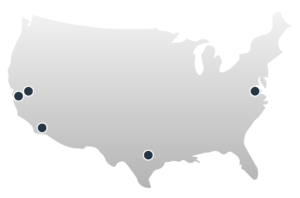By Lane Koch, Vice President, C3 Public Strategies
From a young age, I played team sports. During my sophomore year of high school my basketball coach told me I needed to become a stronger runner. I had an excellent shot, but speed was definitely a weakness. So the following summer, I joined the cross country team and learned that I wasn’t a bad athlete, I was just in the wrong sport. I was an endurance athlete. I loved distance running so much, I dropped basketball all together and made cross country and track and field my athletic focus.
While there is a team atmosphere with cross country and track, both sports are individual in nature. Your competition, more than anything, is against yourself. To compete with anyone in an individual sport, you have to first beat yourself. Each day is about becoming better and better.
High school was also my first introduction to triathlons. I found I enjoyed swimming and cycling as much as I enjoyed distance running. I loved it and still do! One of my greatest athletic bucket list items is to finish an Ironman.
I first set out to pursue this goal in 2019. I trained hard. Lifted weights, logged tons of miles on the bike, on the pavement, and in the pool, only to end up having emergency surgery.
Athletics and fitness have many parallels in professional life. The greatest of which is, even if you’re on a team, your career is an individual sport first.
Here’s three big lessons I have learned in my training that might help you compete better in the marathon of your life.
1. Preventing Injury:
When I started training for my first Ironman, I was in a hurry. I was in great shape, but I wasn’t where I needed to be to begin my training program. Taking on more miles, especially in running, and not building the foundation in strength training in my leg muscles, caused severe knee pain. This pain made the training far less enjoyable. Scaling my training regimen too quickly cost me the ability to compete all together. I should have taken the necessary time to build up my abilities.
Similarly, as an ambitious business owner and a visionary by nature, I have lots and lots of ideas. There is truly no shortage of business ideas with me, many of them great! But I have learned, I cannot do them all at once. To go far, you have to go slow. Perfect each step, then add on more. The stronger your foundation, the more you can do. In doing so you prevent injury and burnout.
2. Get a Coach:
My first coaching meeting with my tri coach blew my mind. In triathlons, the place where athletes lose or gain the most time is in the transitions, meaning in between the swim and bike, or bike and run. My coach advised me that some of the best ways to make my transitions faster is, while changing shoes during transition, “take that time to relieve yourself in the grass” and “never stop while cycling or running, just have one water bottle designated for rinsing yourself off.” Let’s just say, endurance athletes are…a different bread.
Since it is not uncommon for people to drown in the open water swim of these competitions (seriously – not only is the distance long with no wall to grab onto for a break, there’s sometimes debris in open water, people get kicked in the face, and so on), I wanted to make sure my swimming is strong. So I hired a coach. In our first session, my coach completely transformed me into a competitive swimmer. She adjusted my “sprinter stroke” carried over from my elementary school swim team days, to an endurance stroke, getting me farther with less effort. She taught me to rotate my body more, which completely solved my problem of having shoulder pain after swimming, transferring my effort from my shoulders to my lats. And she noticed a lag in my right arm stroke, saving me time & energy.
In our professions, we are hired for our strengths, but sometimes it is our weaknesses that can help us pinpoint the areas in our careers that cause us the most frustration, needing improvement and coaching. Investing some time and money to hire someone who excels at your weaknesses might seem like a hassle, but often little tips will save you time & pain.
3. Have a Clear Goal:
Knowing what I am training for helps shape how I eat, lift, spend my time, and even my money. If I was training for a IFBB Bikini Pro fitness competition versus an Ironman, I would be doing basically everything differently.
Having a clear goal in what you want to accomplish professionally is the first step in getting there. And maybe having a touch of crazy like us endurance athletes. Be willing to do what others won’t, right?
Lane Koch is a Vice President at C3 Public Strategies and the Founder of Grassroots Girl, a consulting brand specializing in providing customized voter-contact platforms for candidates, ballot initiatives and more. This column was provided by America’s Future.





